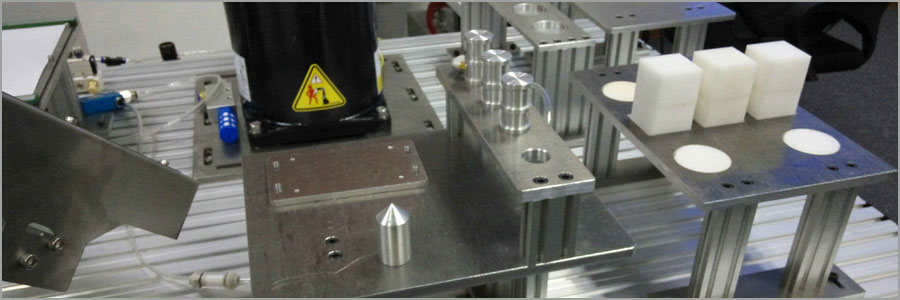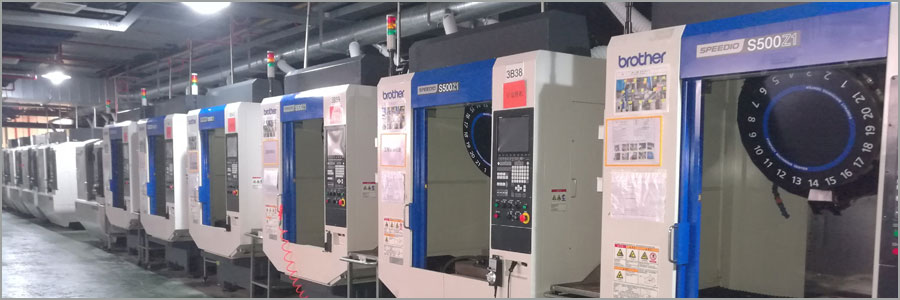What are the unique machining forms of Teflon?
Teflon unique machining forms
| Teflon PTFE plastic raw materials processing and forming are roughly divided into four types: compression molding, roll forming, injection molding, and secondary processing. Today, we will briefly introduce these four processing methods and precautions. |
 1. Fluoroplastic roll forming
1. Fluoroplastic roll forming
The PTFE diaphragm is roll-formed. The roll forming can be divided into two-way rolling and multi-directional rolling. After rolling, the PTFE diaphragm changes from the original opaque color to the translucent crystal color.
One-way rolling is the reheating of the transparent diaphragm, which is quickly processed by two identically rotating rollers of the calender. The rolling ratio is controlled within the range of 1.5-2.5, and the roller speed is generally 20 rpm.
Multi-directional rolling is a molding process in which a film subjected to sintering quenching is placed on a calender to carry out rolling in multiple directions and gradually reduce the film thickness. Wherein the rolling ratio is in the range of 2-2.5. The temperature of the drum should be controlled at 150-200 ° C. When steam is heated, the vapor pressure is 0.5-0.9 MPa. The calendering ratio is an important effect. Too large and too small is not good for the product. Sometimes it is necessary to repeatedly roll many times to press a product.
2, fluoroplastic molding
Fluoroplastics can be molded into plates, rods, sleeves, tapes, seal rings, diaphragms and parts with metal inserts.
Molding is divided into three steps of preforming, sintering and cooling. The preforming is to uniformly add the PTFE powder into the mold and pressurize it into a dense preform (ie, a blank) at a normal temperature; sintering is to heat the preform to a temperature above the melting point, and the cooling is a process from the sintering temperature to the room temperature.
Some fluoroplastics are formed at a temperature above the melting point. This molding die is called a hot stamping die. The corresponding PTFE die is called a cold stamping die.
At the time of molding, attention should be paid to the influence of the compression ratio (generally PTFE is 4-6) and the molding shrinkage ratio (generally 2.6 to 4.5% of PTFE) on the product.
The raw material is polymerized by a suspension polymerization method, and a soft fine powder having a particle diameter of 20 to 500 μm is preferred. The pressing process must be “deflated”. The preforming pressure is 17-35 MPa. The holding time depends on the thickness of the blank. For example, a 100 mm thick blank should be held for 15 minutes.
When sintering, it should be noted that the heating rate can be 20-120 ° C / hour, the larger the product, the slower the heating rate, the higher the sintering temperature of the suspension resin is 370-380 ° C, and the sintering temperature of the dispersion resin is lower, 360- At 370 ° C, the sintering temperature is high, the shrinkage and porosity are increased, and the sintering time should be properly controlled.
Cooling, generally slow down with a speed of 15-25 ° C / hour, in special cases, such as a small thickness of less than 5 mm thin plate or push-formed thin-walled tube, use rapid cooling.
Sometimes the article is annealed at a temperature of 100-120 ° C for 4-6 hours.
3. Fluoroplastic injection molding
PFA (a copolymer of tetrafluoroethylene and perfluoroalkyl vinyl ether), a fusible PTFE, can be injection molded. The processing temperature is wide, the height is up to 425 ° C, the decomposition temperature is above 450 ° C, and the general control processing temperature range is 330-410 ° C.
The hygroscopicity of PFA is very small, 0.03%, so there is no need to dry. Before injection, the insert should be preheated to about 140 °C, and the temperature of the three sections of the injection barrel is: 200-210, 300-310, 350-410 °C, The nozzle temperature is slightly lower than the higher temperature of the barrel, the mold temperature is 140-230 ° C, the injection pressure is 40-90 MPa, the injection speed should be slightly slower, and the holding time should not be too long. The cooling time is 40-150 seconds.
4, fluoroplastic secondary processing technology
Due to the processing characteristics of the fluoroplastics, it is difficult for some products to be molded at one time, and secondary processing is required to obtain a usable finished product. Secondary processing techniques include cutting, welding, lining, and inflation.
Cutting: Similar to metal cutting methods, the equipment has lathes, drilling machines, planers and so on. Note that the blank must be placed for 24 hours before cutting.
Lining: Generally, PTFE black metal pipe and pipe fittings are lining with polytetrafluoroethylene and polyperfluoroethylene propylene (written in F4 and F46), which can be used for chemical anticorrosive and corrosion resistant materials.
Inflatable: the product is a bellows and heat shrinkable tube, a heat shrinkable film, and the like. It is divided into continuous inflation and intermittent inflation.
Welding: divided into hot press welding and hot air welding. Hot-press welding, in special pliers, heated to 327 ° C or more, while pressing to weld.
The hot-air welding rod is welded with PFA purlins, and the two pieces are joined together by heating and pressing through the PFA.
For example, the tube blank of F46 heat shrinkable tube is prepared by water cooling vacuum setting method, the tube drawing ratio is 3-7, the melting cone length is controlled at 10-20 mm, the inflation mold temperature is 80-160 ° C, and the inflation pressure is 0.1-. 0.2 MPa, traction line speed 80-500 mm / min. Others have inflated F4 spiral tubes.
Such as PTFE machine guide rail soft belt: using suspension method PTFE fine pellets, after mashing, through 20 mesh sieve, bronze powder or aluminum powder particle size is 200 mesh, for 100 mm high blank holding pressure for 5 minutes, intermediate venting three times, sintering The heating rate is 50-60 ° C / hour, the temperature is kept at 320 ° C for 1 hour, and the temperature is lowered to 150 ° C. Before the blank is turned, it should be preheated to 80 °C and kept for one hour. The soft belt should be treated with sodium naphthalene, wherein 51 g of naphthalene, 100 ml of tetrahydrofuran, an appropriate amount of sodium metal, and a soft band of 1 mm or less in the naphthalene sodium treatment solution for 1-3 minutes, and then rinsed with hot water at 90 °C.
For example, PTFE can be blended into polyphenylene, polyimide, and polyparaben, while graphite, molybdenum disulfide, bronze powder, etc. can be applied to the hydraulic gate, and fluorine plastic 46 can be used on the corrosion resistant ball valve. The molding temperature is 320-350 ° C, the molding pressure is 3-30 MPa, and the molding temperature is 120-150 ° C.
PTJ Manufacturing Shop specializes in high-precision cnc processing. The processing materials are mainly aluminum alloy, steel, copper alloy, pom, peek, and teflon precision processing. The application fields include optical, intelligent robot, photoelectric, automotive, and communication. Security, surveying and other fields.
|
PTJ Machining Capabilities |
|
Automatic Bar Machining – Multi-spindle cam automatic screw machines CNC Turning – CNC delivers peak cost efficiency in shorter volumes, as well as high capacity production of mechanically simple components Custom Machining - with up to 12 axes of control Multi Spindle Machining- ISO 9001:2015 certified Screw Machine Products – The number of customized production parts per hour can reach 10000pcs Swiss Machining – with up to 9 axes of CNC control, to produce precision components with complex geometries in one operation High Volume Machining – 100 Advanced Production Turning Bar Automatics On-line and Ready CNC Milling - Machining Fully compliant with the exacting requirements of our customers 5 axis (11 axis) Machining – Tolerance | 0.1mm alignment |
What Can we help you do next?
∇ Get more information about Cnc Machining Shop
→Case study-Find out what we have done.
→Ralated tips about cnc machining services
By PTJ Manufacturing Shop|Categories: Blog|Tags: cnc milling services, cnc turning services, milling parts, turning parts, machining parts, special parts,faqs,technical news,company news,material news |Comments Off
